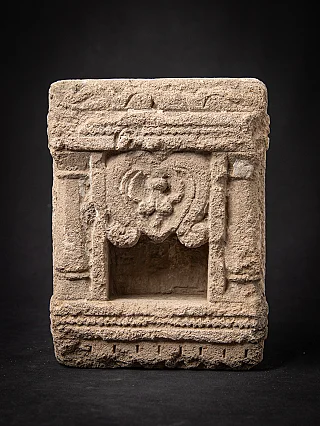The Potala Palace - Tibet
Author : Peter Vredeveld

The Potala Palace, the former residence of many Dalai Lamas
The Potala Palace is a UNESCO World Heritage site that once served as the primary residence of the Dalai Lamas until the 14th Dalai Lama. Nestled in the heart of Lhasa, the capital of the Tibet Autonomous Region, China, this remarkable palace derives its name from Mount Potala, believed to be the mythical abode of bodhisattva Chenresi (Avalokitesvara). For generations, the Potala Palace played a central role in Tibetan Buddhism, housing numerous Dalai Lamas. This awe-inspiring structure rises 300 meters above the Lhasa Valley, perched atop Marpo Ri hill, making it one of Tibet's most monumental landmarks. Stretching approximately 400 meters east to west and 350 meters north to south, the palace features a 3-meter-thick base and a copper foundation to guard against earthquakes. Comprising thirteen stories, it boasts over 1,000 rooms, 20,000 statues (including several significant Buddha statues), and 10,000 shrines.
HISTORY

During the 7th century, King Songsten Gampo built a palace on Marpo Ri Hill, which stood until the 17th century when the 5th Dalai Lama embarked on an ambitious project to expand the existing structure, giving birth to the magnificent Potala Palace we see today. Construction began around 1645 AD during the fifth Dalai Lama's reign, with the completion of the White Palace (Potrang Karpo) by the end of 1648. The subsequent addition was the Red Palace (Potrang Marpo), undertaken between 1690 and 1694, requiring over 7,000 workers, 1,500 artists, and craftsmen. Today, it stands as one of the most exquisite UNESCO World Heritage sites globally, signifying the fusion of art, culture, and spirituality. In 1922, the 13th Dalai Lama further renovated the Potala Palace, revitalizing many chapels and assembly halls in Potrang Karpo and extending Potrang Marpo by two stories. In 1994, the Potala Palace achieved recognition as a UNESCO World Heritage site.
Architecture
The Potala Palace, nestled at 3,700 meters above sea level on the slopes of Red Mountain in Lhasa Valley, features two small chapels dating back to the seventh century: The Phakpa Lhakhang and The Chogyal Drubphuk, representing the oldest and most sacred structures in the palace.
- White Palace (Potrang Karpo)
The White Palace served as the living quarters of the Dalai Lama and houses numerous sacred gold stupas, including the Tomb of eight Dalai Lamas.
- Red Palace (Potrang Marpo)
Dedicated to religious study and Buddhist prayer, the Red Palace boasts several halls, chapels, galleries, libraries, and the tomb of the Thirteenth Dalai Lama. It comprises:
- Great West Hall: The central hall features four grand chapels to honor the legacy of the palace's builder, the Fifth Dalai Lama.
- The Saints Chapel: It houses a small, jewel-encrusted statue of Avalokiteshvara and two attendants, with a Dharma cave below, featuring images of Songsten Gampo, an ancient Buddhist king.
- North Chapel: Adorned with a crowned Sakyamuni Buddha on the left and the Fifth Dalai Lama on a magnificent gold throne on the right. The gold stupa tomb of the Eleventh Dalai Lama can be found in the far left corner.
- South Chapel: Dedicated to the 8th-century Indian magician and saint Padmasambhava.
- East Chapel: Specifically devoted to the founder of the Gelug tradition, Tsong Khapa, surrounded by lamas of Sakya Monastery, former rulers of Tibet.
- West Chapel: This area contains five golden stupas, including the massive 14.85-meter-high funeral stupa of the Fifth Dalai Lama, the Twelfth Dalai Lama's stupa on the left, and the Tenth Dalai Lama's stupa on the right. The 13th Dalai Lama's stupa stands at a towering 22 meters.
- First Gallery: Situated on the floor above the West Chapel.
- Second Gallery: Provides access to the central pavilion for palace visitors.
- Third Gallery: Comprising numerous dark rooms housing extensive collections of statues and priceless figures.
- The Lhasa Zhol Pillars
The Lhasa Village boasts two stone rdo-rings or pillars, known as Interior Stone Pillars and Exterior Stone Pillars, each with its historical significance.
The Potala Palace has earned the title of "New Seven Wonders" by the American show "Good Morning America" and the newspaper "USA Today," acknowledging its vast architectural significance.
Share this page






























